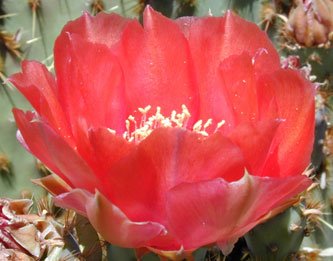The weather gods told us that we needed to go south from the Lisbon area, so we went down to the Algarve, which is Portugal´s equivalent to Spain´s Costa del Sol or NYC´s Coney Island. We arrived the weekend of Potugal´s answer to the annual motorcycle get-together in Sturgis, SD· The motos were out in force as were the policia· Everyone including all the tour busses were driving out to the end of the same road at the very SW tip of the country, the only difference being that the motos were passing everyone on the center line even with on-coming traffic. Quite the thrill· Other than that, we have decided that Portugal is the place to have a second home· Wonderful people, many of whom speak some English, lovely tile decorations on everything, good food at reasonable prices and good scenery· Just don´t judge the country by a tourist area like the Algarve, which is actually quite scenic, just way, way overcrowded even in the off-season.
So what did we do next? Went to another tourist area on the beach, of course· Linda had wanted to go to an area called the Donana National Park in Spain, about 90 km east of the border with Portugal. This is supposed to be the largest roadless area in Europe and a great place to go birdwatching· The little town of El Rocio is mentioned in all the guidebooks and you can really tell it--lots of backpackers (it has marvelous bus service!), tour busses, camping cars from Germany and the Netherlands with many people wandering around wondering what they are supposed to be seeing--kind of like any national park in the US· We opted to stay at the local beach resort about 15 km to the south where we found a wonderful room with a large balcony in a quiet 12-room hotel· Then we had to proceed to remind ourselves how the Spaniards exist in a different time zone than the rest of the world· If you go into town between 3 pm and 8 pm, it looks like a deserted Mexican village· At 8 pm, things start happening and by 10 pm every restaurant is mobbed. We have not yet been able to adjust to eating lunch at 3 and dinner at 10, so we sneak in a large early lunch at 2 pm and get a snack from the grocery story for dinner· The food is not quite as good as in Portugal, but the big surprise was what they call Iberian meat, which is from the local pigs who free range among the oak trees. They use the legs for those fantastic hams but then there´s the rest of the pig to get rid of, so they cut it up into slices and grill it· In the US, pork is "the other white meat" but in this part of Spain, it is almost as dark as beef and a whole different flavor· In the park we saw flamingos, spoon-bills, azure-winged magpies and lots of other neat birds. And of course many many storks· Every power-line tower has a special platform on it for the stork nest, and you see a stork on each tower off to the horizon in many places· For such awkward-looking birds, they are amazingly graceful flyers, but they must have a terrible infant mortality rate because every nest seemed to have three chicks in it and they can´t all survive or the country would be wall-to-wall storks.
Tomorrow we are going to take our first train ride on an old mining railroad associated with the oldest still-active mine in the world. This mine predates the Romans. Should be interesting.




